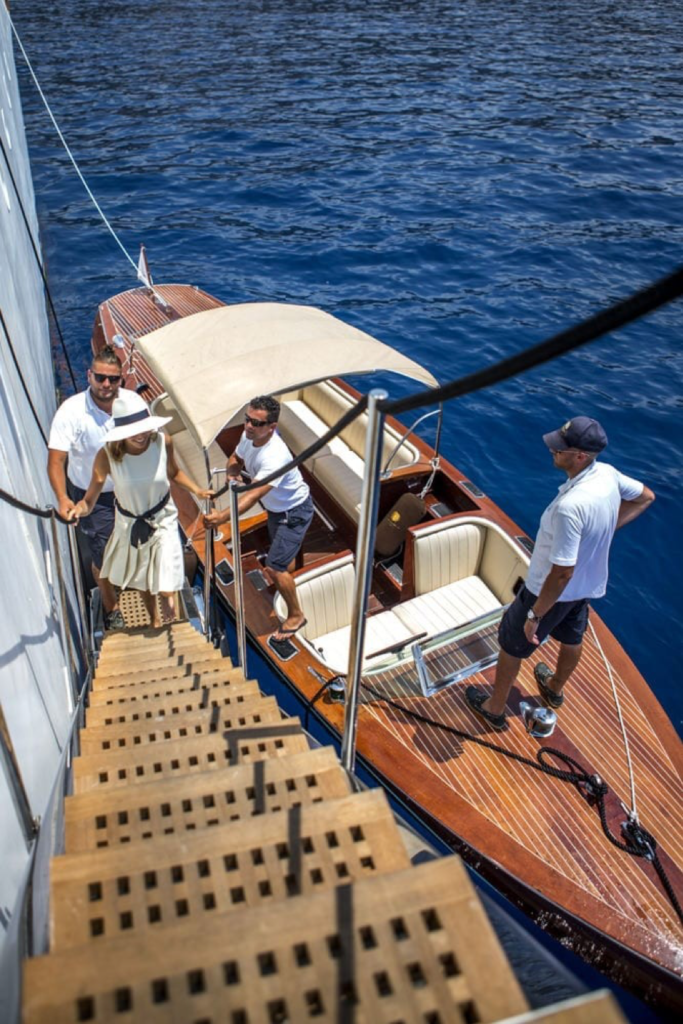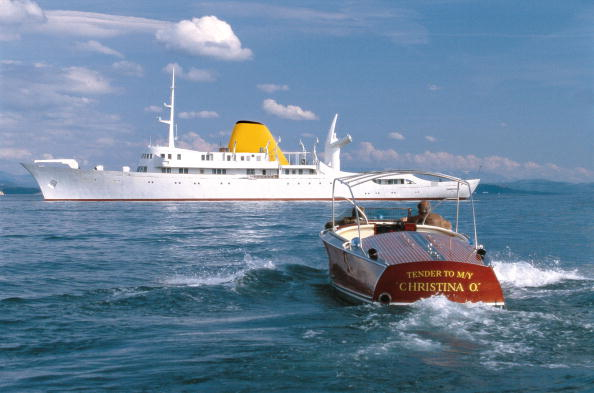- Published on June 11, 2020
It is very easy to take a shortcut and propose a nice Riva Ariston or some pretty and well known similar craft for a classic yacht tender. That would actually be a very bad choice. Let’s examine why.
A yacht tender fills three essential functions:
1. Bringing people to and from shore.
A classic yacht large enough to carry a substantial tender would be able to take up to 12 guests, even more for passenger yachts or during parties on the anchorage. We would never dream of doing a guest run with less than two crew in the tender, one driving, and one ensuring transfers and guest safety. The capacity of the tender is thus reduced by two. A Riva Ariston can seat four…

Embarking in, and disembarking from the tender is a delicate operation, particularly on the yacht side. Crew must have space to handle lines and fenders, assist guests and control movements of the craft. Often, a third crew from the gangway team will step between tender and platform to assist guests. In an ideal world, the access is close to the middle of the tender, with a step built in, easy access down into the cockpit and possibly a handy handle to grab for safety. Surfaces should be non slip, so no 17 layers of high gloss varnish. Walking on the deck of the tender should not be necessary anyways.
Compare the Riva above, with this Hacker craft used as a tender for Talitha.

Note that the crew must also be given access to shore occasionally. That can be many persons too.
If the yacht has space for a larger tender, one can consider shelter from bad weather and more speed, giving raise to limo style planing boats. That requires a heavier engine and more heigth. We shall discuss that again when dealing with the storage of tenders in another article
2. Carrying cargo.
Call it luggage, supplies, spares or rubbish to be dumped, tenders are used a lot to carry cargo. Unless the yacht is large enough to carry a dedicated crew tender, the proposed craft must have sufficient carrying capacity. Another flaw that some classic craft have is a dedicated engine compartment under a full width deck. See the hacker craft below compared to the one of Talitha.

3. Water sports
Tenders are also used to allow guests to have fun on the water. The modern standards require a high towing tower as well as particular wave making hull for waterski and wake boarding. There is a large range of towable toys for the younger guests to enjoy. Carrying and handling all equipment and the guest enjoying it takes space too.
While the requirements for ski cannot always be met in a “classic” looking boat, speed is often enough to fit the bill. Torque for a fast start, combined with a light boat makes the experience more enjoyable.

All this said, if the yacht is large enough and the owner wants a Riva that he/she can self drive to take family and friends about, by all means have one too.
As usual, this article is not intended to be an exhaustive lecture on its subject, but a conversation starter so we can exchange views in the comments below.
May we recommend a look at the “tenders” page of Hodgdon yachts as an example of modern building combined with classic looks and the elements we mention above.
https://hodgdonyachts.com/6-5-8-5-meter-superyacht-tenders/
Another worthy document is this one on the tender of “Malahne”, from the drawing board of Jack Gifford (G.L. Watson)
https://cockwells.co.uk/wp-content/uploads/Malahne.pdf
What would you have for a classic yacht tender?


